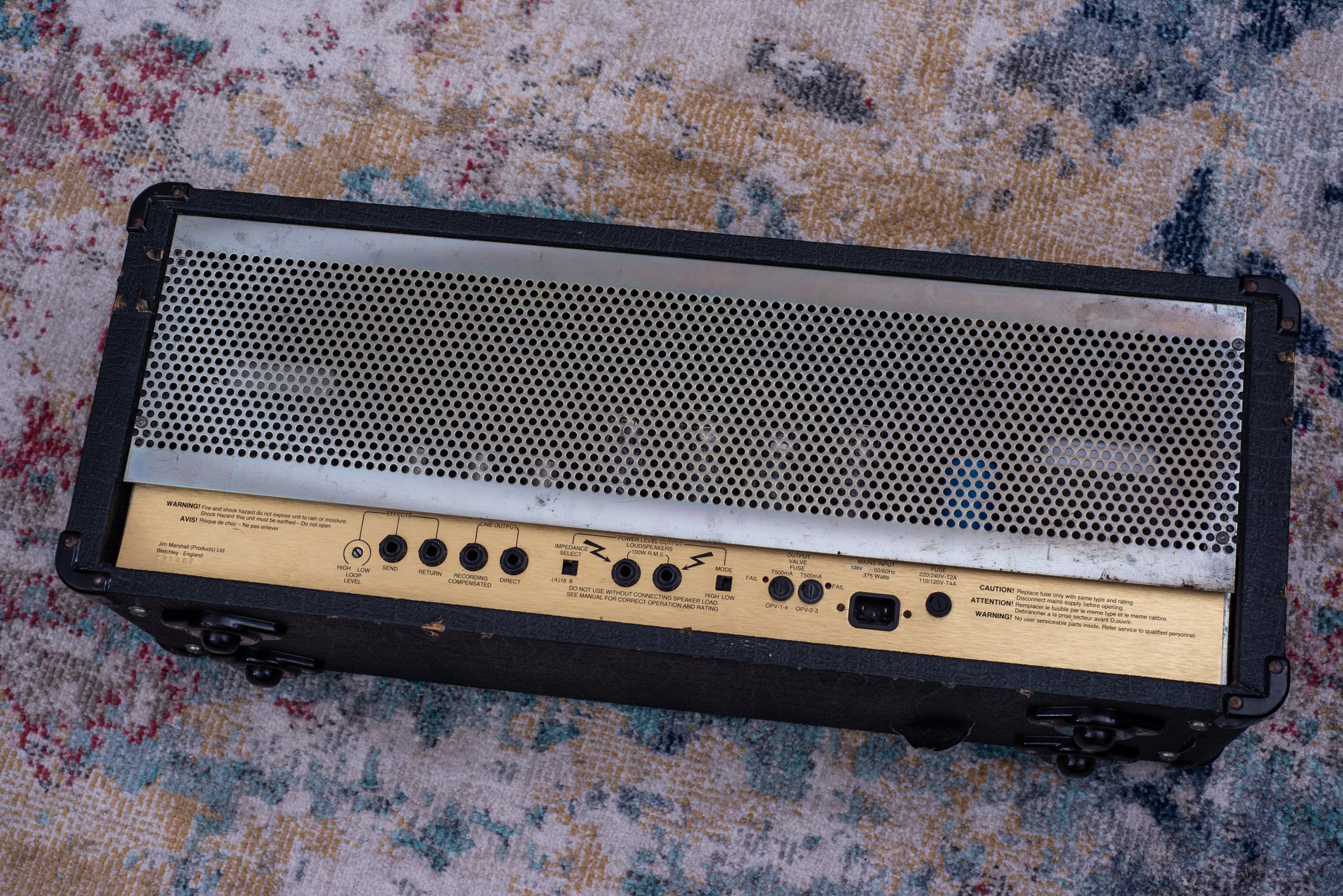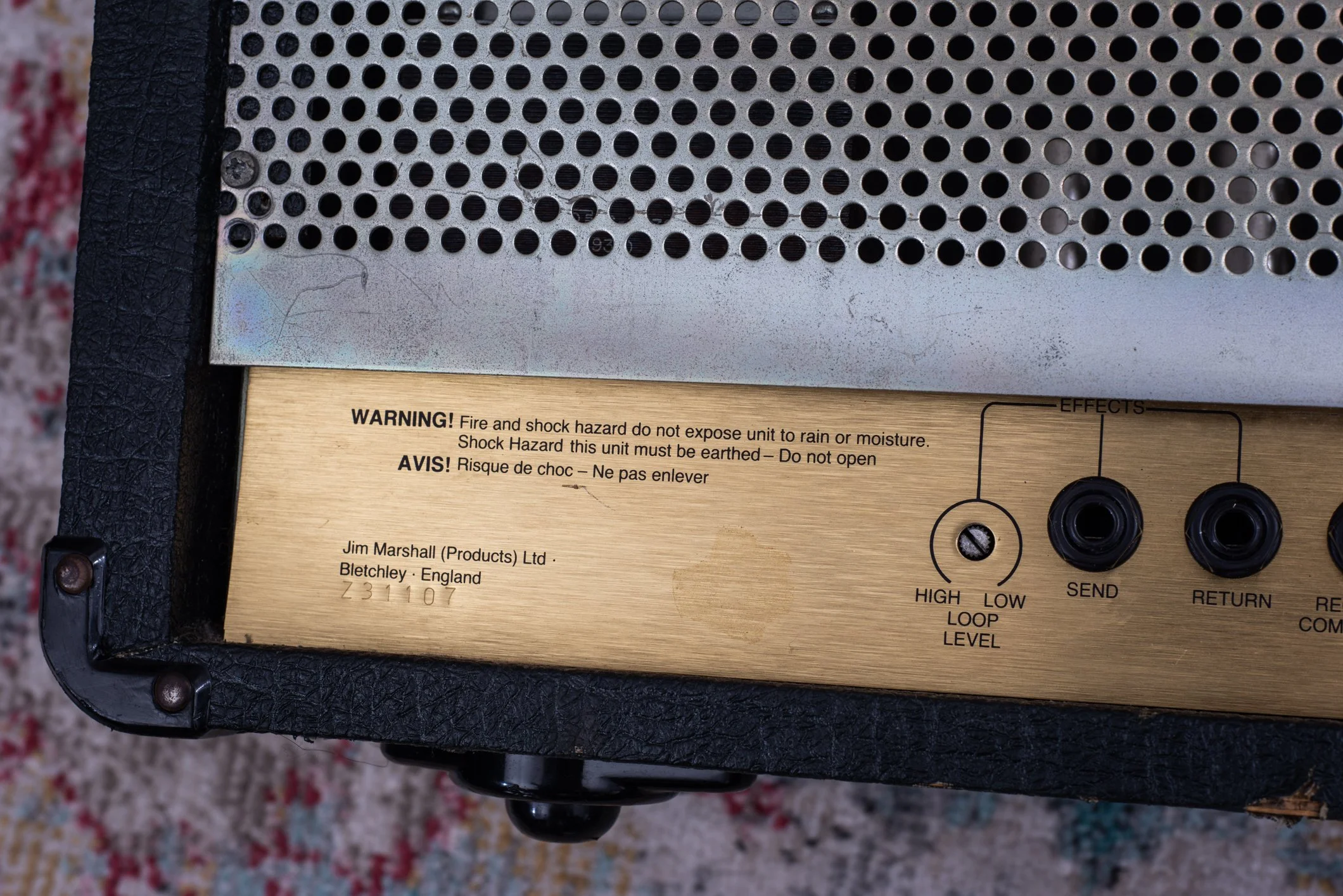1991 Marshall JCM900 Mk III 2100
Specs
Single Channel, switchable master volumes
100w Output
4x EL34 Power Tubes
3x 12AX7 Preamp tubes
Series effects loop
Overview
After selling off my other Mk III’s, leaving only the 2501 combo amp, I really wanted another head. My home studio is not really set up for combo amps, so unless the amp is a model that only came in combo form, I’ll make the trade for the head version as soon as I can. So after a while of looking, I finally spotted this one online - the price wasn’t great, but not terrible, so I went for it. Before I sold the 2501, I ran both that amp and this one, set to the same volume level, through my 4x12 cabinets and they sound completely identical, so I happily sent the 2501 on to its new owner.
This amp is rough cosmetically, and is a year newer than any other Mk III I’ve had so far. Internally though, it’s in top shape - no signs of scorch marks at the power tubes which is a fairly common problem on early JCM900s.
As is no surprise, it’s still one of my favorite Marshall amps, and built to a very high quality standard with chassis mounted tubes all around and very nice wiring and soldering work. The usual complaints that come up with these amps is the reliance only two large filter caps, similar to horizontal input Marshall 2203’s (most of which had 3 filter caps), and the smaller-looking transformers which are now set in to the chassis instead of mounted via bracket on top. There’s tons of info on the filter cap discussion, but if two caps supply enough voltage for the B+ and the amp sounds great to me so I have no complaints.
The circuit topology is otherwise very similar to a JCM800 2203, with tube gain stages, a cathode follower, and the phase inverter, and a fixed bias class AB power section. However, you get a few unique features with this amp, like a series effects loop, footswitchable master volumes, a pentode/triode switch for the power amp, and an optional clipping diode stage. The clipping diodes are the most discussed part of this amp, with some players really disliking them, but it’s important to note that when the Gain Sensitivity control is set to zero, very low voltage is going through the diodes stage. This means those diodes have no more effect on the tone of the amp than a bare wire does. However, you have the option to turn the Sensitivity knob up, which engages more and more of the diodes and adds quite a bit of grit and hair to the tone, which to me sounds very pleasing and natural, due to the way it is placed in the circuit (between gain stages 2 and 3, just after the cold clipper). Of course, it’d be even better if I could footswitch it on or off, so if I were going to have one of these modded that’s the first thing I’d do. The voicing of the amp is a bit different than previous “Mark II” lead amps, and lacks some low end and lower mids in comparison, which is especially noticeable when A/Bing this amp with my 2203. I suspect this was to reduce flubbiness in the low end when introducing the clipping diodes, which do bring back some of that fullness. If that same diode clipping was inserted into the 2203, it likely would sound farty in the lows so the designers of the Mk III probably wanted to eliminate that, assuming that most players would use at least some of the diode gain most of the time.
Overall, a great amp and one I wish they’d reissue, in the same way I’d love to see a reissue of my beloved 2205/2210 amps. However, I think releasing amps that are well known for having diodes with the Marshall brand name likely limits sales drastically. Other makers can get away with diode clipping, like Friedmans and Fortins, because they are geared towards high gain metal players who are more accepting of that, especially when it can be switched out of the circuit like those amps. Marshall on the other hand has a huge appeal for classic rock and hard rock mid-gain tones, where diodes are more frowned upon, and since many modern amp designs like the JVM achieve far more gain than this amp ever did, all while remaining an all-tube signal path, it’s hard to justify a reissue of amps like this. Still, I can dream.











